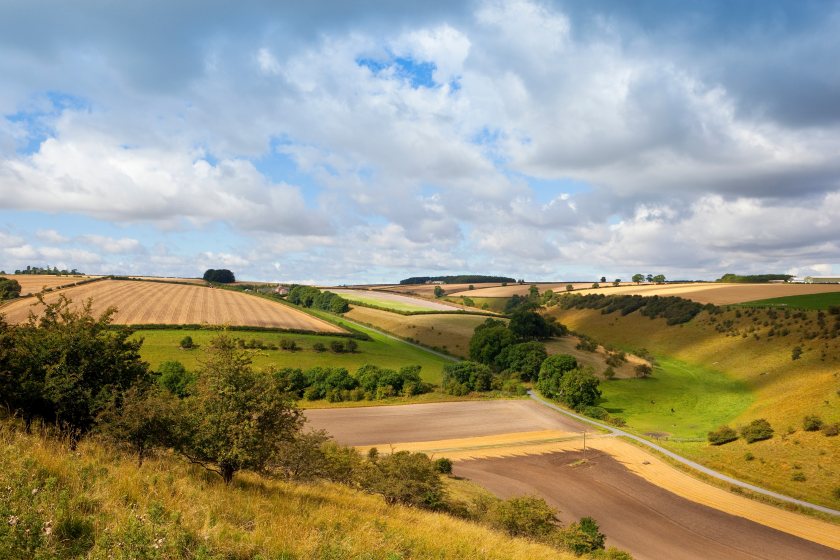
Farmland supply has slumped and prices are slipping – but it’s arable land that’s stealing the spotlight in 2025, according to property firm Savills.
The supply of farmland for sale across Great Britain dropped by 15% in the first half of 2025 compared to the same period last year, the analysis shows.
The average value of farmland also slipped slightly, falling by 1% to £8,200 per acre. However, this headline figure masks notable variations across regions and farming sectors.
“The performance of ‘corn’ versus ‘horn’ appears to be influencing the types of property marketed and how these launches are received by potential buyers,” said Andrew Teanby, director of rural research at Savills.
“Our analysis shows that currently arable land accounts for a much higher proportion of the market than usual.”
In the first half of 2025, arable farms made up 49% of all land marketed – well above the ten-year average of 37%.
In total, arable enterprises accounted for 41,600 acres, the highest volume since 2015. For comparison, the average arable acreage marketed annually over the past nine years was 27,800 acres.
Conversely, dairy land remains steady at just 4–5% of the market, while livestock and mixed-use farms have seen a decline in representation.
“Beef and lamb prices are currently high, while cereal prices have dropped by 14% over the past 18 months, squeezing margins for combinable crops,” Teanby added.
“Combined with significant cuts to delinked payments in 2025 and 2026, some arable farmers may now be reassessing their positions and looking to sell.”
In England, the volume of farmland marketed during the first half of the year was down 17% compared to 2024, while Scotland saw a 14% decline.
Wales bucked the trend with a 3% increase, largely due to the sale of the 3,784-acre Nannau Estate in Gwynedd.
Not all English regions saw reduced activity. The East and West Midlands were outliers, with 55 properties brought to market so far this year, compared to an average of 39 during 2012–2016.
Within the West Midlands, Herefordshire, Shropshire, and Staffordshire all recorded at least 30% more activity than their respective five-year averages – though overall land supply remained similar to 2024 levels.
Commenting on current market behaviour, Alex Lawson, head of rural agency at Savills, said: “Pricing has become more acutely driven by individual circumstances, principally quality – of land, buildings, and infrastructure – and location.
"The presence—or absence—of high-quality infrastructure is playing a more prominent role in determining the strength of buyer interest.”
In Scotland, the market remains steady, though transactions have been limited. “Although few transactions have been completed, early evidence suggests values are holding steady,” said Luke French, head of rural agency in Scotland.
“Interest remains strong in established local hotspots, such as southeast Scotland, where private sales are being driven by progressive businesses and external capital.”
Farmland values dipped marginally during H1 2025, primarily due to small decreases in average prices in England, the report states.
Yet, early harvests brought on by dry weather have yielded better-than-expected results in some cases, which may buoy confidence in the second half of the year.
Looking forward, policy uncertainty looms over the sector, with significant changes expected – including reforms to inheritance tax legislation, which could impact the market further.
